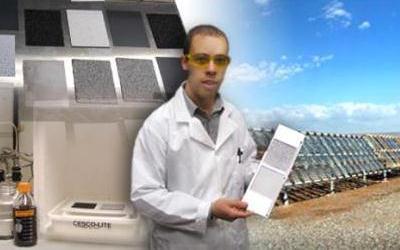Advanced Surfaces
Advanced Surfaces
The Advanced Surfaces Project, sponsored by the U.S. Department of Energy, focuses on better understanding the deposition of soiling materials and developing laboratory methods to mimic natural aging processes for roof surfaces.
About
The reflectance of outer building surfaces is often reduced by soiling and/or weathering processes such as deposition of soot, mineral dust, microbiological growth and UV exposure. This can increase the need for cooling energy by making initially bright (cool) surfaces darker (warmer).
The Advanced Surfaces Project, sponsored by the U.S. Department of Energy, focuses on better understanding the deposition of soiling materials and developing laboratory methods to mimic natural aging processes for roof surfaces. Results from this research will be used to create an accelerated aging protocol to predict the effect of soiling and weathering on reflectance.
Resources
LBNL International Workshop on Advances in Cool Roof Research
Contacts
Hugo Destaillats
Principal Investigator
(510) 486-5897
Ronnen Levinson
Principal Investigator
(510) 486-7494
Mohamad Sleiman
Research Scientist
(510) 486-4678



Related Publications
2011
Sleiman, Mohamad, George A Ban-Weiss, Haley E Gilbert, David François, Paul H Berdahl, Thomas W Kirchstetter, Hugo Destaillats, and Ronnen M Levinson. "Soiling of building envelope surfaces and its effect on solar reflectance—Part I: Analysis of roofing product databases." Solar Energy Materials and Solar Cells 95.12 (2011) 3385-3399.